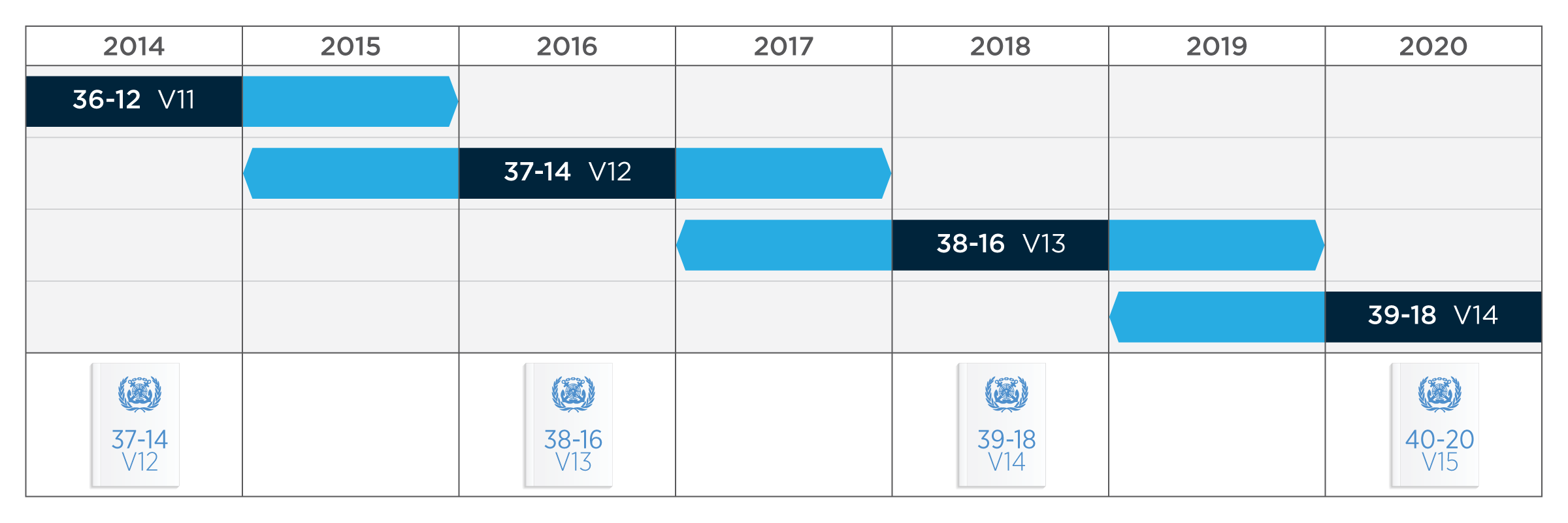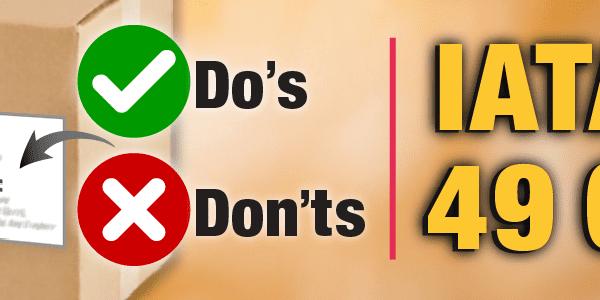Top 4 Questions from the Regulatory Helpdesk
Welcome back to the Regulatory Helpdesk where we answer your dangerous goods & hazmat questions. Here are some highlights from our helpdesk last week. Check back weekly, the helpdesk rarely hears the same question twice.
IMDG Editions
- Q. What edition of the IMDG should I be using?
- A. The customer would still need the 38th edition to get him through all of next year. The new 39th edition will be published at the end of 2018 but it can’t be used at all until Jan 1, 2019. Even then the 38th is still a viable option.

IMDG Transition Timeline
Placement of the Consignor’s Certification Statement
- Q. Can the Consignor’s certification appear on a second page or on the back of the shipping document?
- A. Yes, if there is no other non-DG information intervening when using the phrase in TDGR 3.6.1(1)(a). This phrase requires that the certification appear below the information specified in 3.5. The Transport Canada FAQ page indicates that the “consignor’s certification may appear on the back of the shipping document as long as it is after the information required under Section 3.5“.
Limited Quantities Under IMDG
- Q. Can limited quantity provisions be used to ship under the IMDG Code?
- A. Yes, but you should have IMDG Code training or consider a re-packing service if you are not trained, since the requirements are not the same as for ground. A DG Transport Document and the “UN” limited quantity label are mandatory, and there are cargo transfer unit (if you are loading one) marking considerations. Note that IATA for air shipment is more restrictive than IMDG.
Attending a Public Training Class
- Q. When I attend a training course do I have the opportunity to go over specific scenarios or focus on specific areas of concerns that would perhaps relate to my company’s type of hazardous shipments? Just wondering how flexible the course is.
- A. As an Instructor I always ask class participants, during introductions, if they have any specific areas that they’d like noted in the context of the course. Questions are encouraged at any time related to the topic under discussion during the presentation of material. Naturally, during a “public” course, the amount of time devoted to any particular students’ question will be dependent on the number of students, diversity of areas of interest, and the type of question.Typically some side-bar discussion time is available during breaks &/or at the end of the session, depending on finish time. Companies with a few people to train often contract for a “custom” course where the material is tailored to their specific issues – or consider the standard course delivered “on-site” where the interests of all participants are common and the instructor can address them specifically within the context of the general course.





